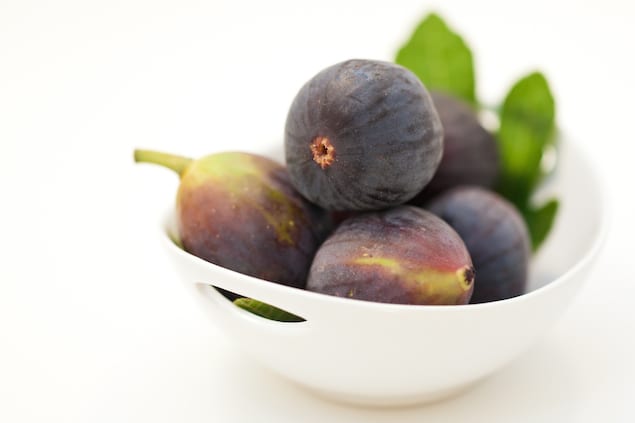A health food for some, a gourmet food to others and a scary little fish to many more, anchovies are a fun way to incorporate fish into otherwise boring dishes.
By Jovina Coughlin

A health food for some, a gourmet food to others and a scary little fish to many more.
This tiny little fish swims in schools throughout most of the world’s oceans. Most become food for bigger fish, but sea-going cultures all over the world consume these tiny creatures and have incorporated them into their respective cuisines. This fish is a small, warm water relative of the herring, a Northern European staple, and just as the peoples of the north salted their herring to preserve them, the anchovy has long been salted by fishermen and packers in the Mediterranean where it is a staple. While they were usually consumed fresh and either grilled or marinated, they always preserved some of their catch for later use. Before the advent of canning and refrigeration, salt was the predominant way to preserve them. Salting anchovies changes both their taste and texture. Although Europeans seem to prefer buying whole salted anchovies from their local market, salted anchovies show up in the US mainly in the form of small flat or rolled fillets packed with olive oil – like sardines. Salt-packed anchovies are sold as whole fish with heads removed; while oil packed anchovies are sold de-boned or in pieces. Oil packed fillets are ready to use, while salt packed anchovies must be de-boned and soaked to remove the excess salt.
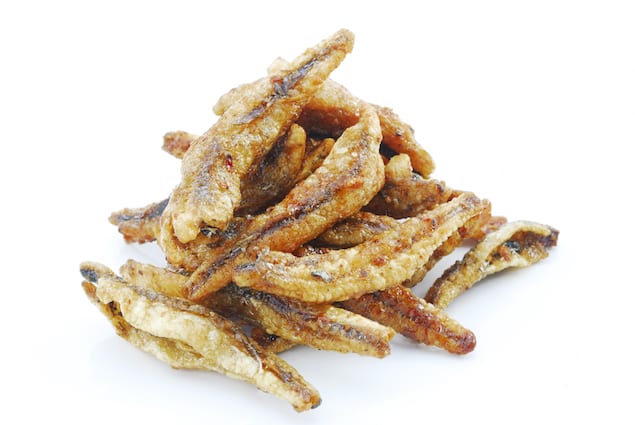
After rinsing, salt-packed anchovies have a deep flavor with less saltiness; while oil packed anchovies are saltier due to being preserved in olive oil. In most cases they can be used interchangeably in recipes. Salt-packed anchovies can be stored covered in the refrigerator, where they will keep almost indefinitely. Salt-packed anchovies must be soaked prior for use in a recipe. There are three commonly used soaking liquids: cold water, milk or a combination of cold water and dry white wine. Whatever liquid you choose, use enough to completely cover the anchovies and soak them for approximately 30 minutes. (Many people will change the liquid after about 15 minutes.) You can soak the salt-packed anchovies before or after removing the backbone.
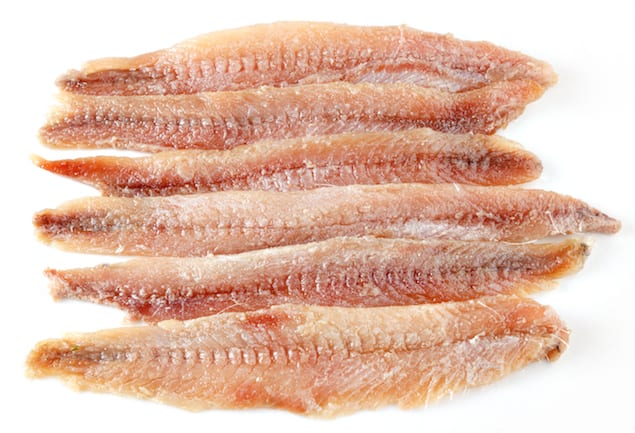
Anchovy paste can make an acceptable substitute for anchovies in some recipes. (Use ½ teaspoon for every anchovy called for.) Anchovies can be used in recipes as a seasoning ingredient rather than as the main ingredient. Many recipes call for one or two mashed or minced fillets that disappear into the sauce as it is cooked. There are well-known recipes where the anchovy is the main ingredient For example, in an anchovy and garlic paste that is used to spread on slices of crostini or in Bagna Cauda, an anchovy and garlic dip, that is traditional in Northern Italy. The Italian cuisines of Campania, Calabria, and Sicily often rely on anchovies for pasta dishes, such as, Spaghetti con Acciughe that includes anchovies, olive oil, garlic, red pepper flakes and bread crumbs. Anchovies are often minced or mashed into vinaigrettes to season vegetables and salads.
Consider the health benefits of anchovies:
Anchovies are high in Omega-3 polyunsaturated fatty acids, which can help lower cholesterol and reduce the risk of heart disease.
Anchovies are also a good source of essential vitamins and minerals, such as Vitamin E, Vitamin D, Calcium and Selenium.
Anchovies are an excellent source of protein – delivering 9 grams of protein for only five anchovies.
Due to their size and short life span, Anchovies contain lower levels of heavy metals (mercury, lead, cadmium and arsenic,) and other environmental toxins – especially when compared to tuna and other larger fish.
Equivalents:
2 oz Anchovy paste = 4 tablespoons = 1/4 cup
2 oz Anchovy fillets in oil = 50g = 8 to 12 Anchovies in oil = 12 drained
1 ½ oz Anchovies, drained = 40g = 8 to 10 Anchovies
1/2 teaspoon Anchovy paste = 1 Anchovy fillet
Once a tin or jar of anchovies is opened, you can store the anchovies in the refrigerator (discard the tin and store them in a sealed container) for up to two months: just make sure the fillets are covered in oil during that time to keep them fresh.
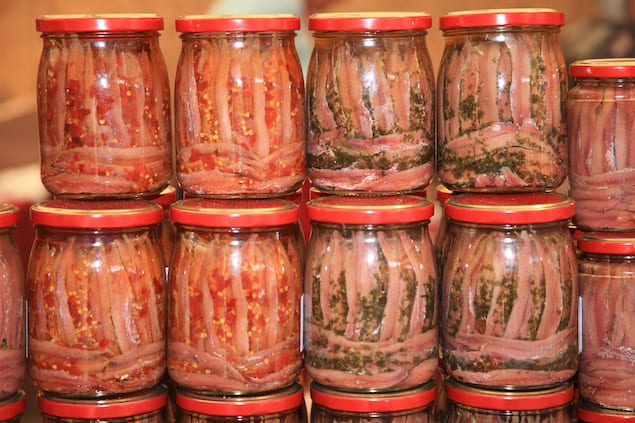
Here are some recipes where you can incorporate this tiny fish into your cooking. I prefer to purchase anchovy fillets packed in extra-virgin olive oil.
Bagna Cauda
Bagna Cauda is the Italian version of fondue. Raw vegetable pieces are dipped into the hot, garlicky, anchovy-flavored oil until warm – and then eaten, catching every little garlicky drip on a fresh piece of Italian bread. It helps to have a Bagna Cauda “pot”, but a fondue dish with the Sterno flame underneath works — as does an electric wok on low. Get the recipe here.
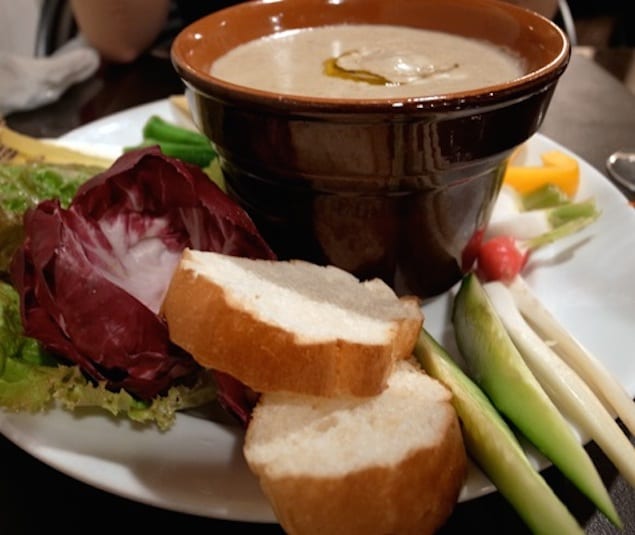
Stuffed Roasted Peppers
A combination of tuna, anchovies, capers and balsamic vinegar transform roasted peppers from a side dish to a main attraction or appetizer. Get the recipe here.
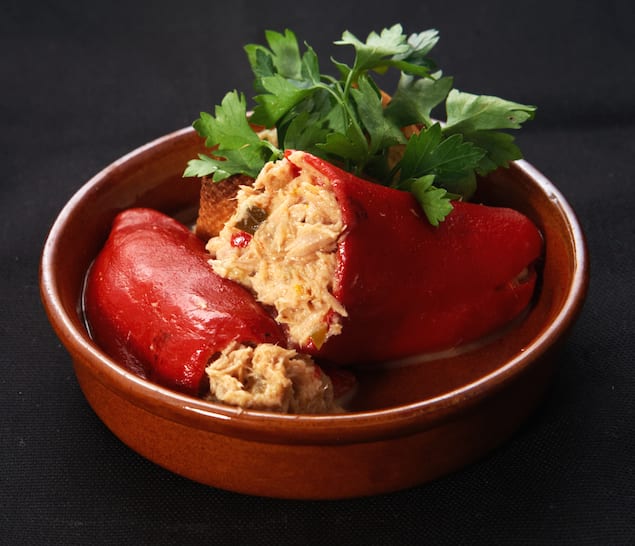
Spaghetti con Acciughe
A classic Neapolitan dish, this spiced pasta dish is flavored with red pepper flakes, plenty of anchovies, and topped with crispy breadcrumbs. Get the recipe here.
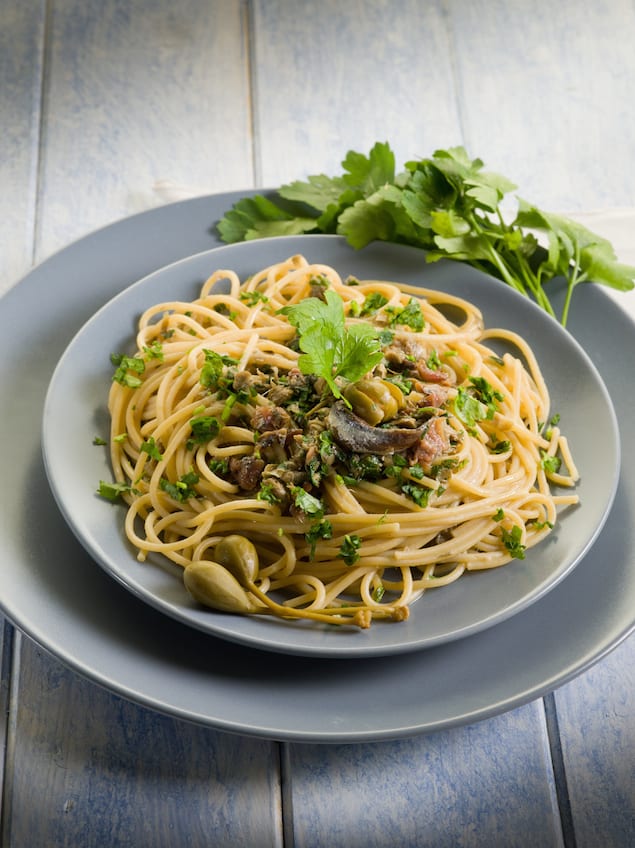
Italian Fish Stew with Anchovy Pesto
A hearty, tomato-based stew with cod mussels and shrimp simmers away to develop a beautiful flavor. Top with a spoonful of anchovy pesto before serving to bring even more depth to the soup. Get the recipe here.
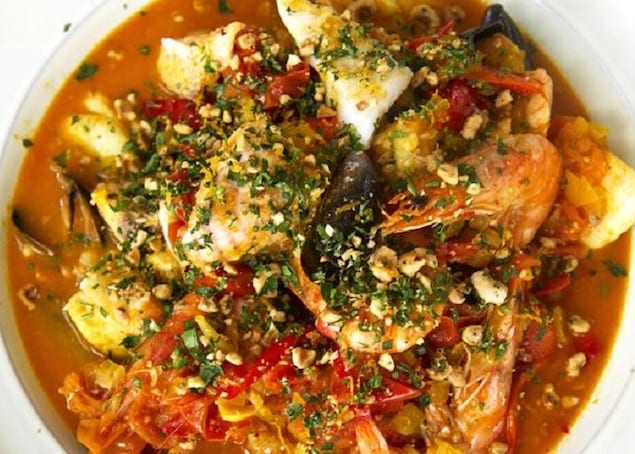
Lamb Chops With Anchovies, Capers and Sage
Cook with the anchovies and capers, these lamb chops are flavorful and tender. Add plenty of garlic and lemon juice to bring the dish home. Get the recipe here.
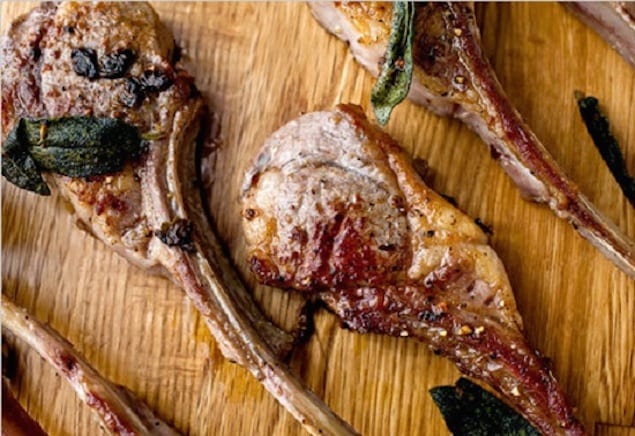
Figs Stuffed with Anchovy Tapenade
For a slightly sweeter anchovy appearance, these figs play off the salted fish to make their natural sweetness even more apparent. Serve as a delightful appetizer, no utensils required. Get the recipe here.
